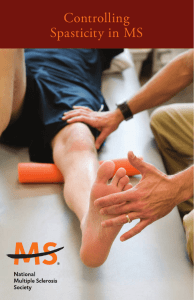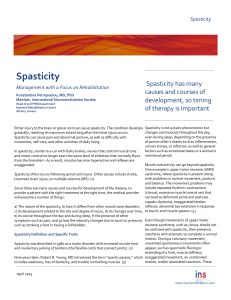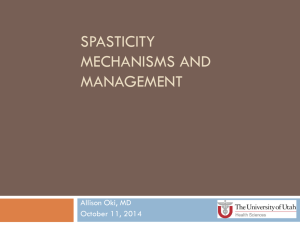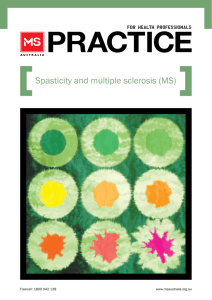Audit on the use of oral Baclofen in children with cerebral palsy
advertisement
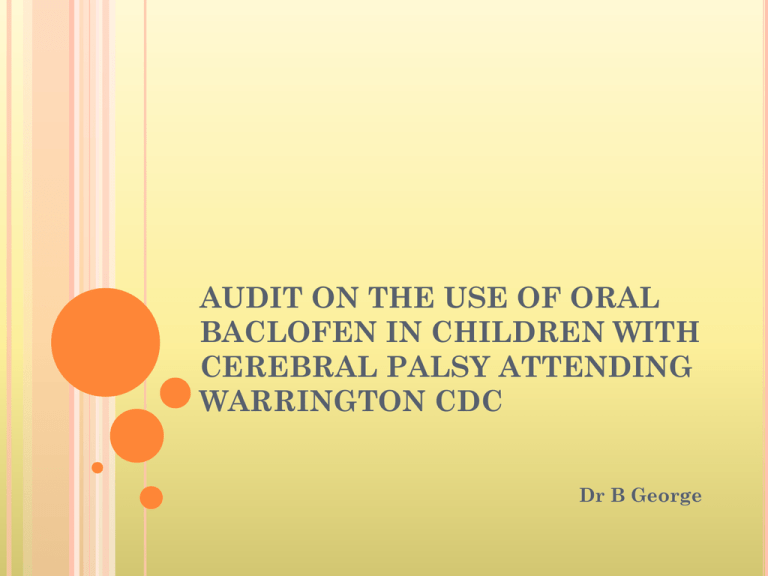
AUDIT ON THE USE OF ORAL BACLOFEN IN CHILDREN WITH CEREBRAL PALSY ATTENDING WARRINGTON CDC Dr B George AIM To identify various factors affecting usage. To identify existing regimes of prescription. To document benefits and side effects. To identify existing or prevalent guidelines on oral prescription. METHODS List of all children registered as ICD-10 (G80-83) codes as having cerebral palsy under the Warrington CDC. Obtained from IT (medical records) at Warrington CSU. Notes retrieved and children currently or previously on Baclofen identified. Data collated on above sub-set. Total children registered with CP Total notes obtained Children with CP on analysis Children currently on Baclofen Children previously on Baclofen 78 43 42 09 02 ‘n’ total no 11 % of children with CP on Baclofen is 11/42 = 26.2% Avg age of our sub group Avg age at diagnoses Males Females 10y 1m 30 m 8 3 BODY PATTERN INVOLVEMENT Diplegia Quad/tetraplegia Hemiparesis/plegia Undiagnosed syndrome CP -unspecified 3 3 1 2 2 ETIOLOGY Asphyxia Syndrome (Undiagnosed) Unspecified 8 2 1 MOVT PROBLEMS Spasticity 10 Dystonia 1 CO-MORBIDITIES THERAPIES Physiotherapy Occupational therapy Speech & language OTHER MEDICATIONS BACLOFEN – DATA Freq ODS BDS TDS QDS 1 3 6 1 BNF BNF advises 0.75 mg – 2 mg/kg daily or 2.5 mg q.d.s increased gradually to maintainence. Child 1–2 years 10–20 mg daily in divided doses, Child 2–6 years 20–30 mg daily in divided doses, Child 6–10 years 30–60 mg daily in divided doses Child 10–18 years 5 mg 3 times daily increased gradually; max. 2.5 mg/kg or 100 mg daily MOVT Baclofen Mg/kg/d months when started By grade spasticity yes 20 od ? 55 SG 2.5 od 1 6y9m spasticity yes 5,5,5 0.88 19 C 1 mg tds 4 8 y 10 m spasticity yes 10,10,15 1.4 ? ? 10 y 7 m spasticity yes 5,5,5 0.86 18 C 2.5 mg bd 3 10 y 2 m spasticity yes 10,10,10 1 19 C 2.5 mg bd 2 12 y 2 m spasticity trialled nil nil 79 C 2.5 mg tds upto 5 bd 4 6y dystonia yes 4,4,4,4 0.8 18 C 2.5 mg tds 5 9y7m spasticity trialled nil nil 45 C 2.5 mg tds upto 5 bds 5 6 y 10 m spasticity yes 5,5,5 1.5 14 ? 3 mg tds 5 14 y 10 m spasticity yes 5,5 0.25 107 C 2.5 bd upto 5 tds 4 5y9m spasticity yes 20,15,15 1.85 58 C 2.5 bd upto 5 tds 3 AGE DOSE PT TB JC 13 y 5 m Dose At Starting mg GMFCS NOW 4 RF GC SDC KK DM MW EW VR LT BNF BNF advises 0.75 mg – 2 mg/kg daily or 2.5 mg q.d.s increased gradually to maintainence. Child 1–2 years 10–20 mg daily in divided doses, Child 2–6 years 20–30 mg daily in divided doses, Child 6–10 years 30–60 mg daily in divided doses Child 10–18 years 5 mg 3 times daily increased gradually; max. 2.5 mg/kg or 100 mg daily SIDE EFFECTS Nil 7 KK- stopped as no response(no s.e.) MW - stopped as worsening reflux DM – vomiting, JC -- decreased appetite VR-Increasing spasticity, stopped walking unaided, swallowing diff---dose reduced CONCLUSIONS All patients prescribed for increasing hypertonia. No standardised regime of prescription identified-i.e. starting regime, increasing dosage, frequency. All mg/kg dosages were within BNF limits. Some side-effects noted, mainly increasing feeding problems and reflux. ?statistical significance due to small numbers. No guidelines identified in literature search specifically for oral Baclofen prescription. RECOMMENDATIONS To propose a regional standardised regime for prescription. To generate information/advice sheet on Baclofen for prescribers in the hospitals and community. To generate clinic sheet for prescribers to document information on Baclofen on the first and then on each clinic visit. THANK YOU
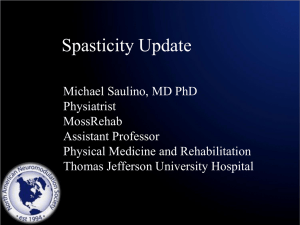
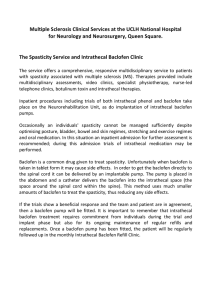
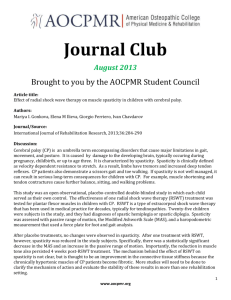
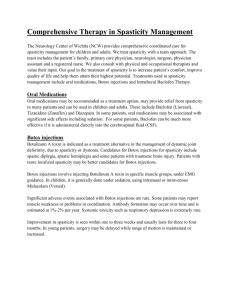
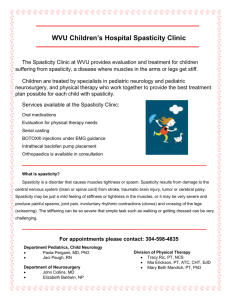

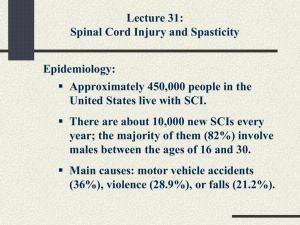
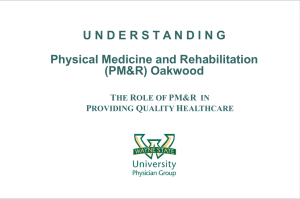
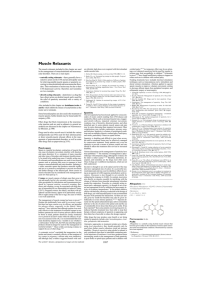
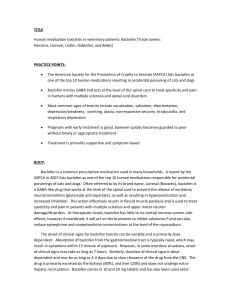



![[Type text] TELE-REHABILITATION GUIDELINE Medical](http://s3.studylib.net/store/data/006912606_1-1414416742ac02528f75a206a90577f0-300x300.png)

